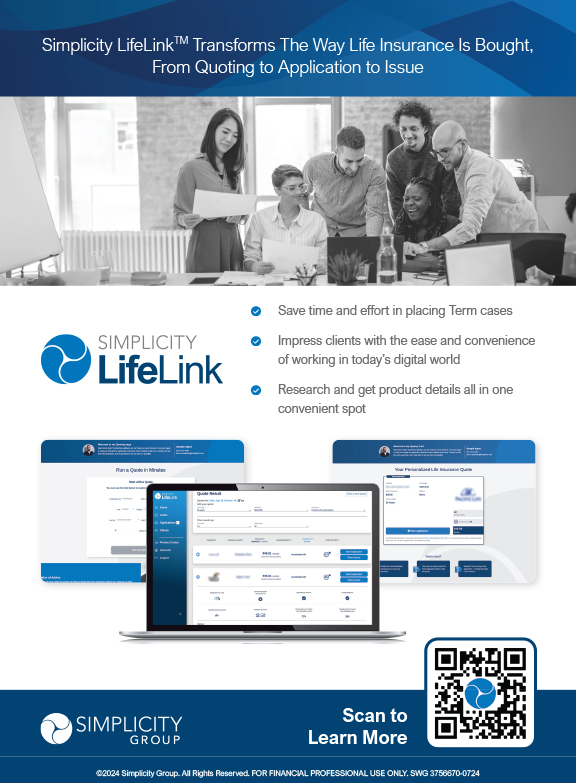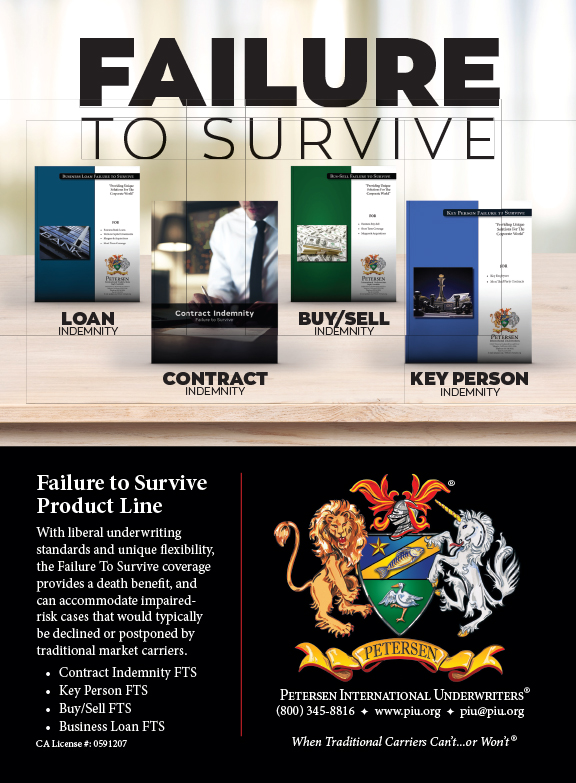Buy annuities now! They are better than they have ever been, and they may not be here forever, at least in their current form. I don’t say that to be a “sales guy” trying to create urgency. I say that because there are memories that are tattooed into my brain that has been one of the most profound learning lessons of my career. I will share them with you below.
In my other article in this month’s edition entitled “GLWB Now, Or Accumulate then Choose a GLWB or SPIA?” I ended the article with the #1 reason I will usually choose purchasing a Guaranteed Lifetime Withdrawal Benefit (GLWB) Annuity now versus accumulating until retirement then choosing an income focused annuity (GLWB or SPIA). Although the math that I laid out in that article by itself should be enough, the “math” is not my #1 reason. What is that #1 reason? Because I am paranoid. Let me explain.
Once upon a time, I was a VP at one of the major variable annuity companies back when variable annuities were the dominant product line in the annuity space. At this time, fixed and indexed annuities industry wide production didn’t hold a candle to VA production. This was prior to the financial crisis that started in 2007. Those traditional variable annuities were largely sold with GLWB riders, and they were good! It was the variable annuity companies that pioneered these riders along with the earlier riders that were Guaranteed Minimum Death Benefit Riders (GMDBs) and Guaranteed Minimum Income Benefit Riders (GMIBs).
GLWBs were a great invention because they guaranteed a certain level of income, regardless of how the VA subaccounts performed. GLWBs were different than their predecessor—GMIBs—in that the GLWBs did not require annuitization. Hence, the difference between a GMIB and a GLWB was generally that the GMIB required annuitization and GLWBs were merely withdrawals that continued even after the account value went to $0. No annuitization required. GLWBs were such a great invention that the indexed annuity world copied the GLWB design around 2005 or 2006.
At the time (around 2006, 2007) our top Variable Annuity GLWB had seven percent compounded roll up rates and payout factors of five percent at age 65. These products sold like hotcakes. Variable Annuity wholesalers across the country were now driving around in Maserati’s, Bentleys, etc.
Then 2008 came and the market started to drop significantly from its previous highs in 2007. The quarterly results/losses of VA carriers started to generate horrible headlines that shed doubt about the future of major VA carriers. That is when the Brokerage firms that distributed these products started to invite carrier product actuaries to conference calls! Crazy thought huh? These actuaries’ jobs were to put these broker dealers and their reps at ease about if these VA companies can actually continue to afford to have such great withdrawal benefits. Afterall, if you have a variable annuity contract that has lost 30 to 50 percent of the “account value” but the carrier is guaranteeing income on a value that grows by seven percent, there will be strain on the carriers that guarantee that ultimate income. Furthermore, as interest rates dropped, the “present value” of the carriers’ future liability became huge! Hence, the capital drain from these VA products was a huge weight on the shoulders of these VA companies.
So, in 2008 and 2009 is when we all got to learn more about carrier hedging, dynamic hedging, futures contracts, put options, delta, theta, Vega, gamma, rho, etc. than we ever wanted to because actuaries were constantly doing calls with distributors. My carrier was saying something like they had hedged to the 99.999 percent, which meant that unless a .001 percent scenario happens in the stocks, futures, bond market, then they will be just fine. This was a consistent line from most VA carriers in the industry, not just mine. Well, .001 percent happened…
It was around early 2009, coming off the Lehman Bankruptcy, the market being down 57 percent, and interest rates plummeting, that the executives of these carriers started to come out and say, “Disregard everything we said previously. It is time to simplify and de risk our products.” The “de risk” buzzword basically meant that the lofty GLWB riders were going the way of the dinosaur. Well, by 2010 many of the products that were loved by distributors and reps were effectively extinct in the VA space.
The combination of the stock market losing over 50 percent in the financial crisis as well as interest rates dropping significantly sank many carriers. But then you had technical accounting issues that added salt to the wound, such as “deferred acquisition cost unlocking.” Billions of dollars of losses were reported by many carriers, quarter after quarter. Many VA companies were also downgraded by ratings agencies and many completely went out of the VA business. All because of this one product design.
For over a decade thereafter, I heard many advisors say, “That XYZ product that you guys sold at your old company, I should’ve sold more of that and should’ve bought more of that.” In hindsight they knew they had a good deal, but it was too late.
The irony was, around 2009, 2010, 2011, the executives of these carriers were now having their fixed/indexed annuity experts train many of the VA wholesalers on how indexed and fixed annuities work. What was once the black sheep of the carrier family of products was now the “last man standing” in many of these carriers, and the main strategic focus. The fixed/indexed annuities had better pricing dynamics and hence these products were more “derisked.”
Fast forward to today. Today, Indexed Annuities guarantee more robust GLWB payouts than the VA space ever did! The traditional VA space (not including RILAs) is about 54 percent of the indexed annuity space from an industrywide production standpoint. Accumulation focused indexed annuities are also better than they have ever been! In my 25 years I have not seen these indexed annuities as attractive as they are now. So, in my other article, I discuss how I am very much about taking advantage of these products that we have today. I will repeat, I don’t say that to be a “sales guy” trying to create urgency. I say that because there are memories tattooed into my brain that formed one of the most profound learning lessons of my career. Get them while we have them.
In closing, I want to be clear that I am not saying that carriers will eventually have to purge the wonderful indexed annuity benefits that we have today. Afterall, Indexed Annuity pricing as well as pricing on the GLWBs have completely different pricing dynamics than the VA space had. For instance, the difference between the “Accumulation Value” in an indexed annuity and the “GLWB Benefit Base Value” will not increase by say 50 percent in any one year because of a market crash. Why not? Because with indexed annuities the client cannot lose their account value. That means that the carriers “amount at risk” is not subject to as much volatility. That is right, the stability of the account value of an indexed annuity actually helps the carrier “hedge” the GWLB benefit on that same annuity.
What I am saying is, these products have never been better and that is largely because of where interest rates have been recently and where they are now. These higher rates may not last forever. Remember what I said earlier, if a carrier is guaranteeing a future income stream, lower interest rates means that their liability/capital requirements increase. If interest rates go lower, just don’t be in a position where you say, “I wish I sold more of that.” Some healthy “paranoia” is OK.


























